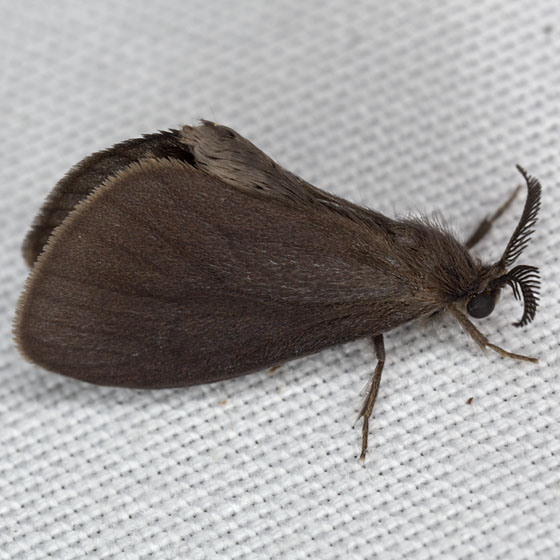Mini-mystery revealed: They're caterpillar houses.
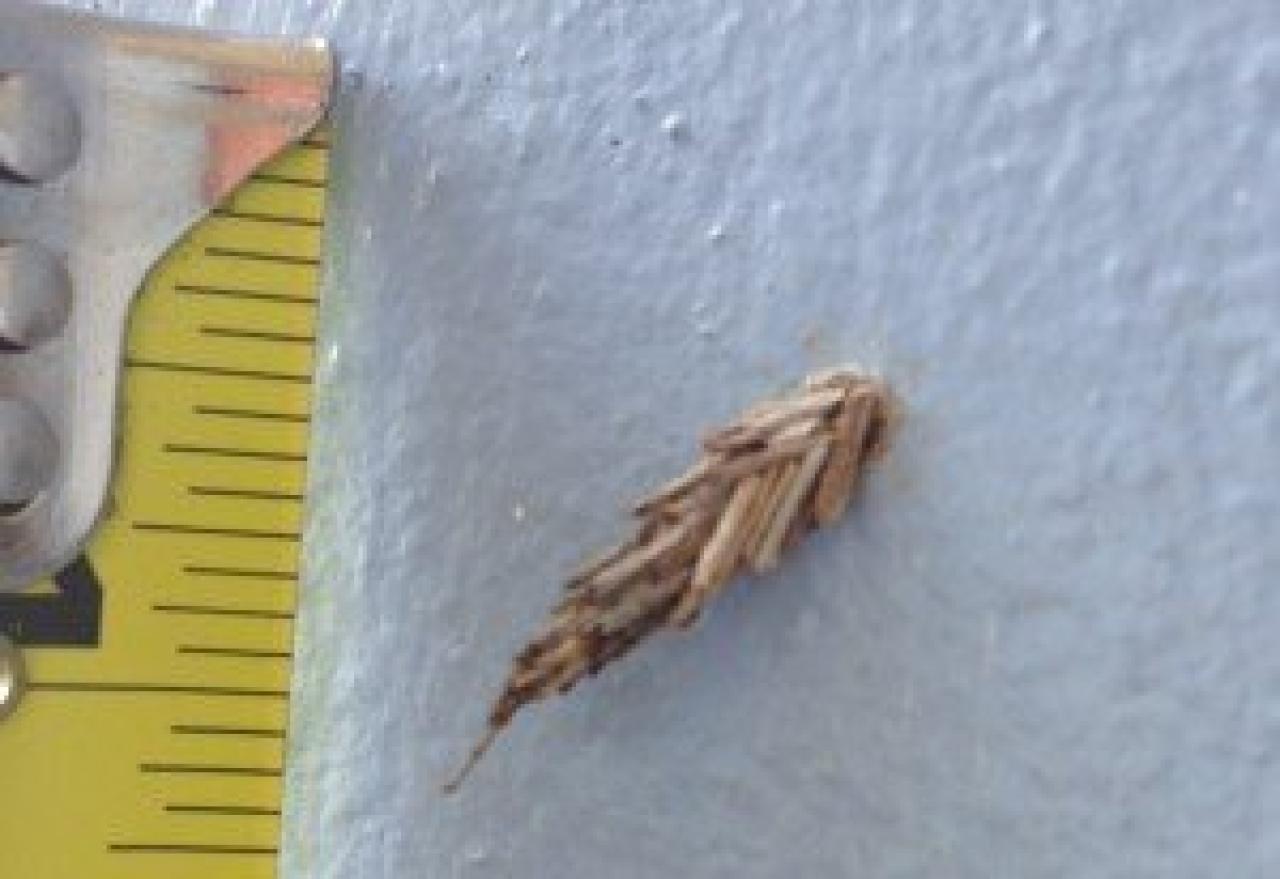
They're everywhere, these strange and tiny packages of crushed leaves or seeds that seem to stick to anything. I see them on the sides of my house, on plants, even traveling ever so slowly on my car after briefly parking in a grassy area. For many years I've puzzled over what they could be. No one I talked to had any clue what I was referring to, even some entomologist geeks. Finally I snapped a photo and sent it to He Who Knows All About Insects, Jeffrey Hahn at UMN Extension, who answered my question in a snap. So I am here to dispel for you the mystery that you didn't realize existed.
Bagworm moths! Or, rather, bagworm moth larvae, and their small protective 'houses.'
A bagworm moth caterpillar collects small plant materials and glues them around itself to make a nice little home that it drags around everywhere it goes. This is similar to the behavior of caddisflies, but those are aquatic and in a completely different phylogenetic families, so really not much in common except the little house.
The bagworm larva sticks its head and forlegs out of the house, then crawls around and feeds on plants. The ones I see around my house and along the river are about 3/8 to 1/2-inch long. (So you can see why I was impressed at the distance it traveled up my car in just a short time!) While generally not a problem for humans, bagworm moth caterpillars can become a nuisance on some crops or landscape plants if they're overly abundant.
Once the larva is mature and ready to pupate, it will climb up onto structures, like my house, and hang out until it emerges as a small moth. All of this just happened recently for at least one bagworm species, but you can still see the cases attached to walls or even plants, as they remain for quite awhile after the moth emerges. (See photos below.) So keep your eyes open!
Learn more from Wikipedia
Bagworms in their houses, constructed of locally sourced plant materials:
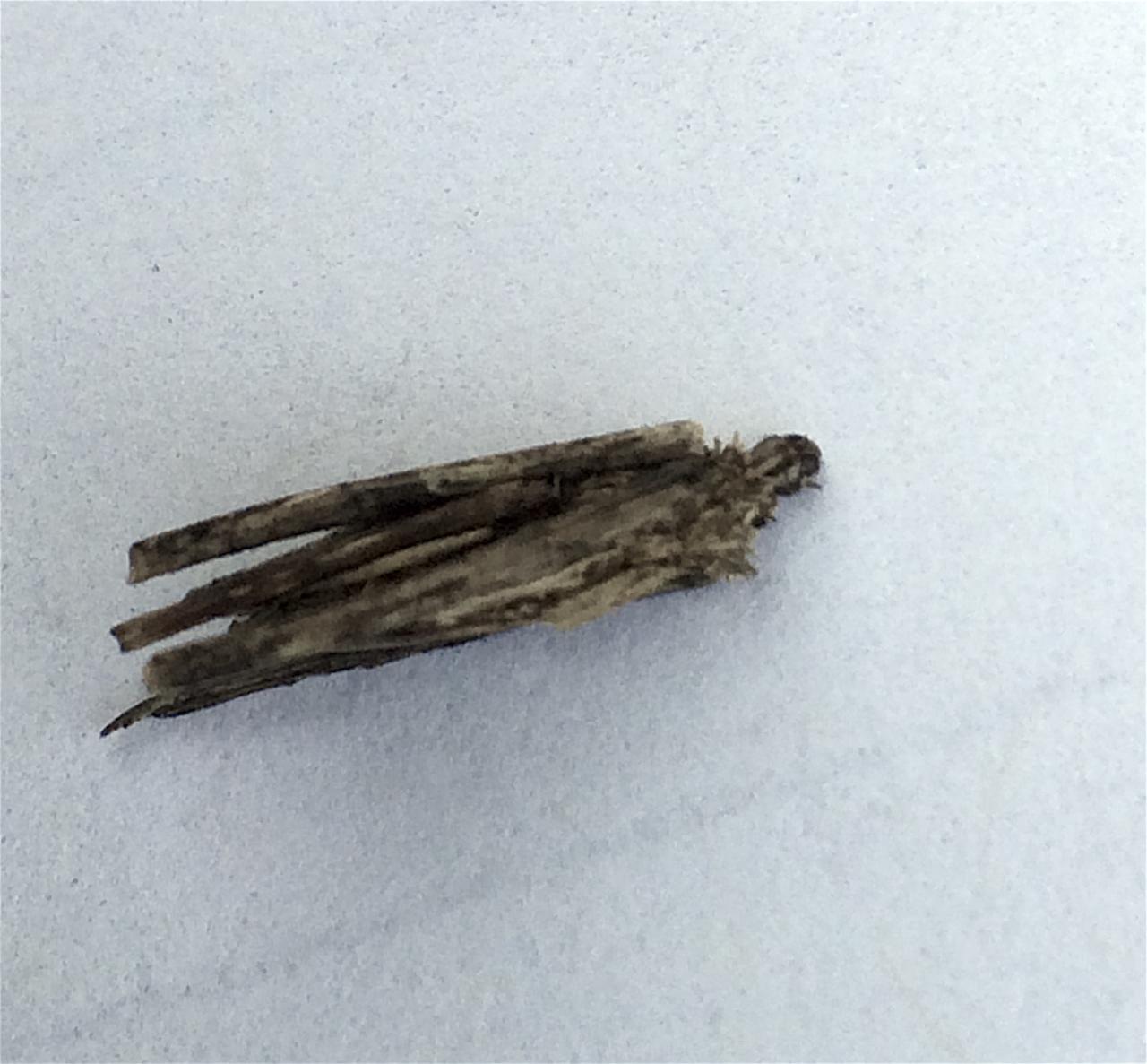
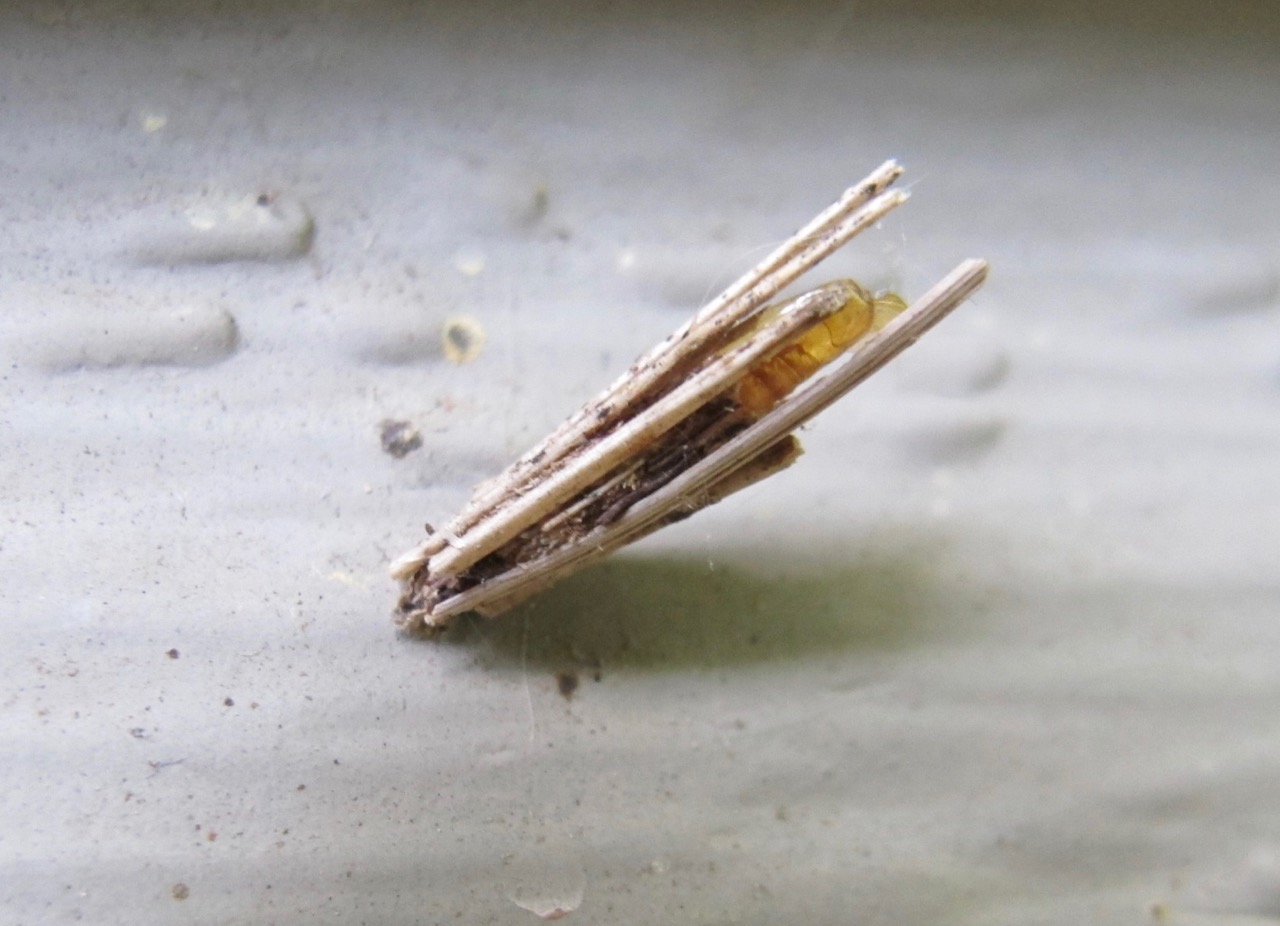
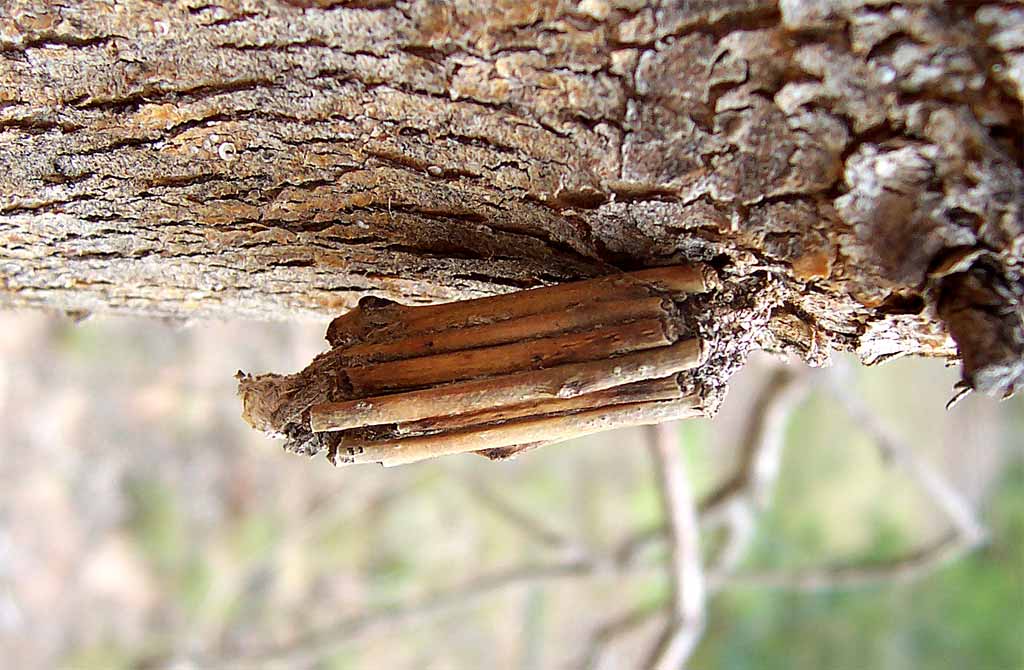
And, finally, an adult bagworm moth:
Photo by Steve Nanz
